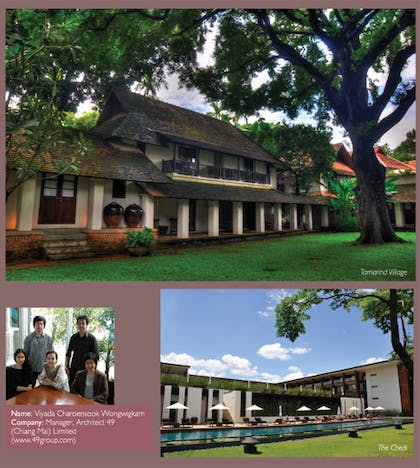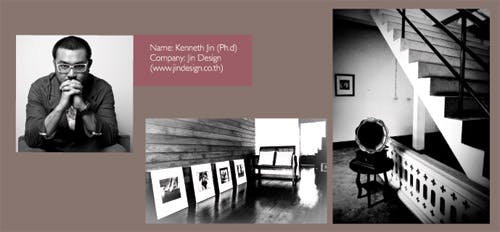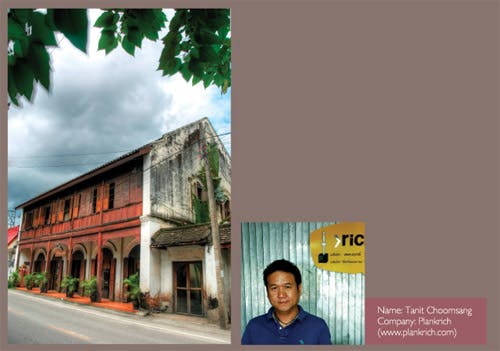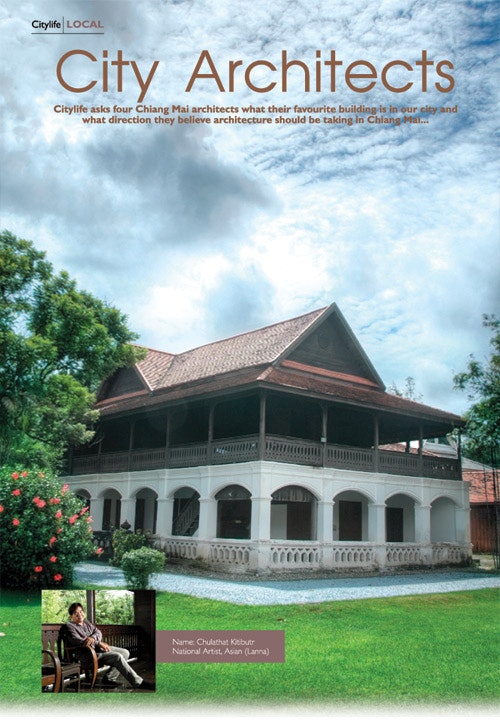Favourite piece of architecture in Chiang Mai: Khum Chao Bureerat (Maha Inn), which is now the Lanna Architectural Centre, Faculty of Architecture, CMU. This design combines Lanna architecture and western design technology. Although it is a hundred years old, this building is a good example of the combination of traditional Lanna design and the vision of the architects of the time in using then-modern technology without forgetting our traditional foundations.
What direction do you think architecture should be taking in Chiang Mai: Firstly, I think the architecture should basically reflect Lanna customs and culture. All architects should carefully consider if what they have in mind will be suitable for this city, for instance, not turning a temple into some commercial attraction. Secondly, we should respect the context with which each piece of architecture will be placed. This doesn’t mean that we shouldn’t welcome modern architecture, but you have to be careful when you mix the old and the new buildings. They should go well together. This is possible with the right materials, colours, shape etc. Thirdly, new architecture should be green. All building should save energy and generate less pollution. For example, a good architect can design cool buildings which don’t necessitate excessive use of air conditioning.

Favourite piece of architecture in Chiang Mai: I like many buildings in Chiang Mai. But if I had to choose my favourites, they are Tamarind Village and The Chedi hotels. Both of them have nice usable spaces between the buildings and are very aware of their neighbouring environment. Tamarind Village infuses the charms of its Lanna neighbourhood while The Chedi has done an excellent job with adding a modern structure to complement the old traditional building. Sometimes I like an entire neighbourhood, rather than a special building, such as the Wat Gate area.
What direction do you think architecture should be taking in Chiang Mai: There is no one particular style that can answer this question. I believe that architecture should always respect the context with which it is featured. It doesn’t matter what province you are in, as long as you look around you, understand the atmosphere and the characteristics of your surroundings, and create a building which enhances this, then it is a good start. This doesn’t mean that all new buildings should look like old ones; they can be very different. It is the nature of architecture to reflect society, economy and trends. But one must be aware of the context. For instance Chiang Mai is full of temples, architects must take that into consideration. For Chiang Mai, it is important to look at the weather as well: how to keep a building cool in the heat, how to combat the moisture and damp of the rainy season or keep warm in winter. But most of all, architects should try to minimise the use of energy and be mindful of sufficiency and green issues.

Favourite piece of architecture in Chiang Mai: I like a small guesthouse called Ban Sayla down Nimmanhaemin Soi 5. As a residential architect, it fulfills all of my requirements: it has warmth and humility; it is not the norm, yet doesn’t shout ‘look at me’; it doesn’t pretend to be cool or clever…it just is. I admire how the architect has used the space to provide the space usable for the guesthouse owner and their clients. I believe that architecture and the philosophy of society should go hand in hand, and at Ban Sayla they do. To be a residential architect is not about creating a monument, but a usable space that is home.
What direction do you think architecture should be taking in Chiang Mai: It should be created with conscience and with deep knowledge of Chiang Mai. There is a joke that Chiang Mai is a town that slays experts…so many Bangkok know-it-alls have come here thinking they know best and have failed. It is important to be still; learn, listen, bow your head and you will get to know Chiang Mai better. Don’t bring your pretensions here but look at the nature, something as simple as Chiang Mai during and after the rains – they are so different, as are summer and winter. So my advice is if you don’t know Chiang Mai, don’t pretend you do, it is dangerous. I think that plain and simple architecture but infused with charm is appropriate for Chiang Mai, nothing too boring, but not too extravagant either. It doesn’t have to be Lanna…it can be a thousand na, a hundred na, ten na or one na, as long as it is not pretentious, that is what I think.

Favourite piece of architecture in Chiang Mai: A colonial and Lanna style commercial building on Charoenrat Road, near Wat Gate. It now houses the shop Vila Cini. I like the enclosure once you enter the courtyard when you are surrounded by both buildings. I also admire the building’s function, and the symmetry between the buildings. This for me is a signature building in Chiang Mai.
What direction do you think architecture should be taking in Chiang Mai: We should respect our history and keep some buildings traditional, i.e. the Lanna style of architecture, using traditional colours and materials, but we should also have architecture that reflects modern times. Architecture changes, and in 100 years people will look back and see the newer style we have now as a style that represented this moment in time. It’s important to have zoning areas, to keep some areas historical, like they do in most European cities. We can’t stop the demand of development, and we shouldn’t try, but we must build in the right areas. At the moment I am working on a design guideline with CMU … for Charoenrat Road based on existing buildings and the city’s history.
